Matanga Hill, situated in the captivating Hampi, Karnataka, is a prominent landmark that offers breathtaking panoramic views of the surrounding landscape. This ancient hill is not only a natural wonder but also holds immense historical and mythological significance. From its vantage point, visitors can witness the awe-inspiring beauty of Hampi’s UNESCO World Heritage Site, dotted with majestic ruins, ancient temples, and the meandering Tungabhadra River. In this article, we will delve into the allure of Matanga Hill, exploring its history, attractions, and the remarkable experience it offers to travelers.
It is approximately 400 meters away from the Hampi Bus Stand, which is situated in the heart of the Hampi Bazaar area. From the bus stand, visitors can easily walk to Matanga Hill by following the signs or asking locals for directions.

Table of Contents:-
it has been an integral part of Hampi’s history, dating back to the Vijayanagara Empire that thrived from the 14th to the 16th century. A visit to Matanga Hill is a journey that combines history, spirituality, and natural beauty. From its historical significance to the exhilarating trek to its summit, every aspect of this hill is captivating. The awe-inspiring views, the remnants of a glorious past, and the serene atmosphere make Matanga Hill a must-visit destination for travelers exploring the wonders of Hampi. So, lace up your hiking boots, embrace the adventure, and prepare to be enthralled by the enchanting allure of Matanga Hill.
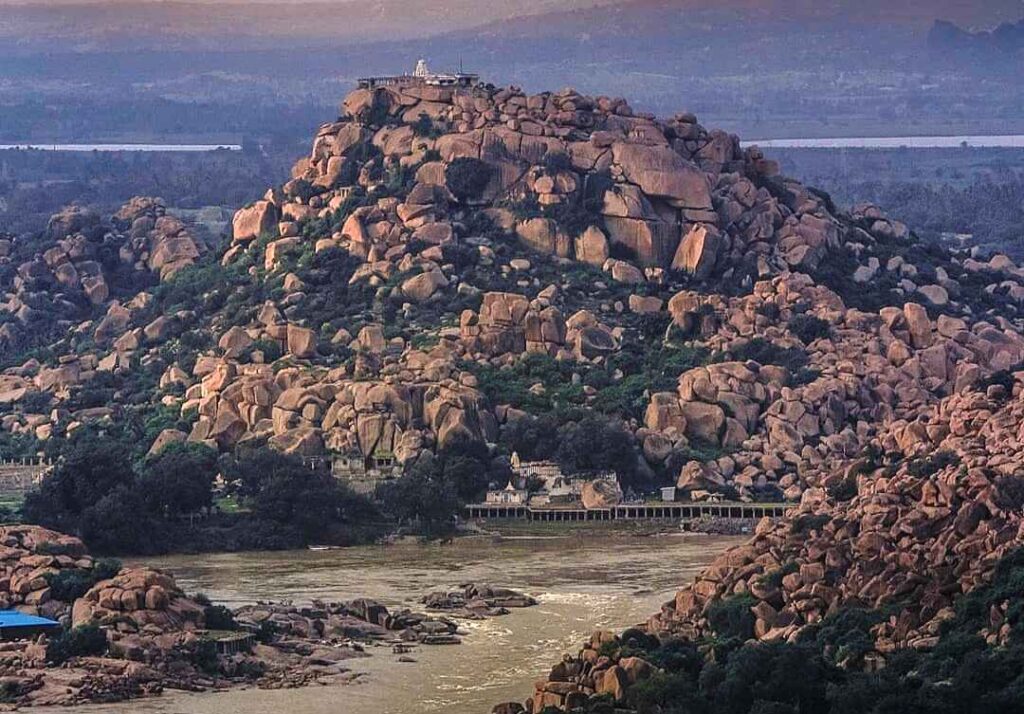
Quick Facts
- Timing: 06:00 AM to 06:00 PM
- Entry Fee: No entry fee required
- Photography: Allowed
- Location: Google Maps
The Legend of Matanga Hill
Hampi’s Matanga Hill isn’t just a vantage point for breathtaking views, it’s a place steeped in a captivating legend that intertwines with the epic Ramayana. Let’s delve into this age-old story that adds a layer of intrigue to your climb.
The legend revolves around a revered hermit named Matanga who chose Matanga Hill as his tranquil abode. One fateful day, a powerful monkey king named Vali, brother of Sugriva, arrived at the hilltop. Vali, known for his immense strength and arrogance, had just slain a fearsome demon bull, Dhundhubhi. However, instead of honoring the sacred ground of Matanga Hill, Vali committed a terrible act: he flung the carcass of the demon bull onto the holy site.
This act of disrespect enraged Matanga. The wise hermit, his serenity shattered, unleashed a powerful curse upon Vali. The curse declared that Vali would never again be able to set foot on the sacred peak of Matanga Hill. The ground itself would reject him, bringing him misfortune. Later, a misunderstanding between Vali and his brother Sugreeva resulted in Vali vowing to kill Sugreeva. Fearing for his life, Sugreeva along with his friends took refuge on Matanga Hill, where they were safe from Vali because of Sage Matanga’s curse.[1]
This curse had a profound impact on the events of the Ramayana. Later, when Lord Rama arrived in search of his abducted wife Sita, he encountered Sugriva, Vali’s banished brother. Sugriva, seeking Rama’s help to reclaim his throne from Vali, revealed the curse placed upon him and his kind. This revelation fueled a bitter rivalry between the brothers, ultimately leading to a fierce battle where Rama, with Sugriva’s aid, emerged victorious.
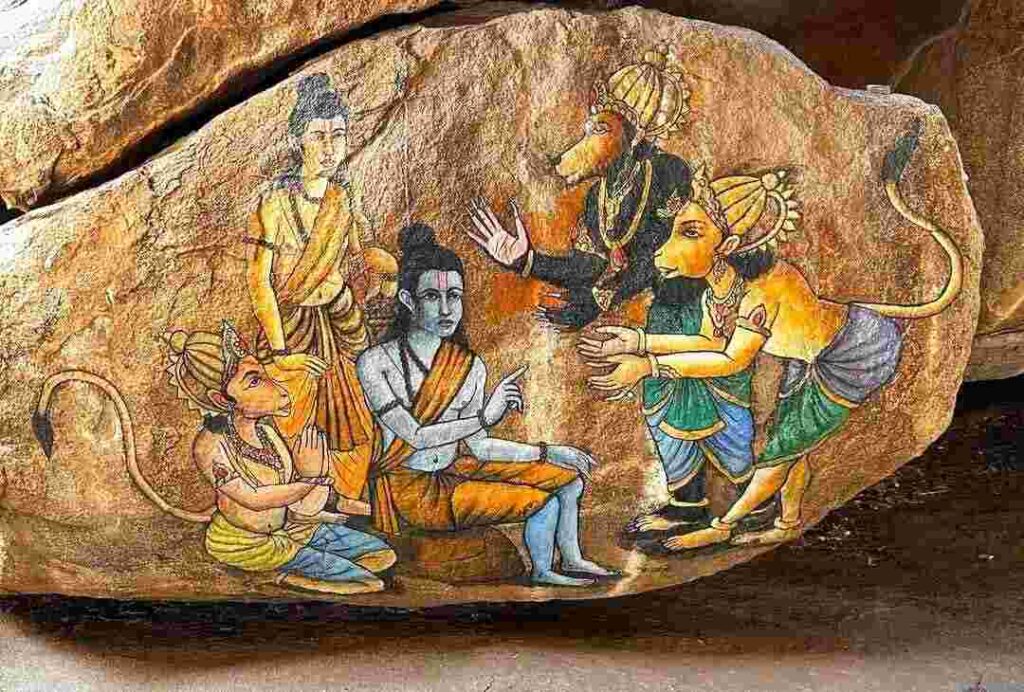
Veerabhadra Temple
At the top of the Matanga Hill, is the Veerabhadra Temple, also known as Matanga Veerabhadra Temple which is one of the most significant temples in this region. The inscriptions at this north-facing temple mention that this temple is called as Matanga Veereshwara and Matanga Deva. This temple has a garbhagriha, an antarala, a sabhamantapa and a ardhamantapa. There is a 5-feet tall idol of Veerabhadra and a Linga called Siddheshwara. The Veerabhadra stands gracefully in a Tribhanga posture. He holds a bow and arrow as well as a sword and shield in his four hands. Shivalinga is carved on the crown.
Adjacent to the ardhamantapa there is a small south-facing shrine with a seated idol of Bhadrakali. This sculpture is also 5-feet tall. This fierce goddess holds a bow and arrow, a sword with a shield in her four hands much like Veerabhadra. The inscriptions at this temple mention that the devotees worship Veerabhadra and the temple of Virupaksha from the top of this hill. A 1532 C.E. inscription from Achyutaraya reign mentions Matanga Veereshwara.[2]
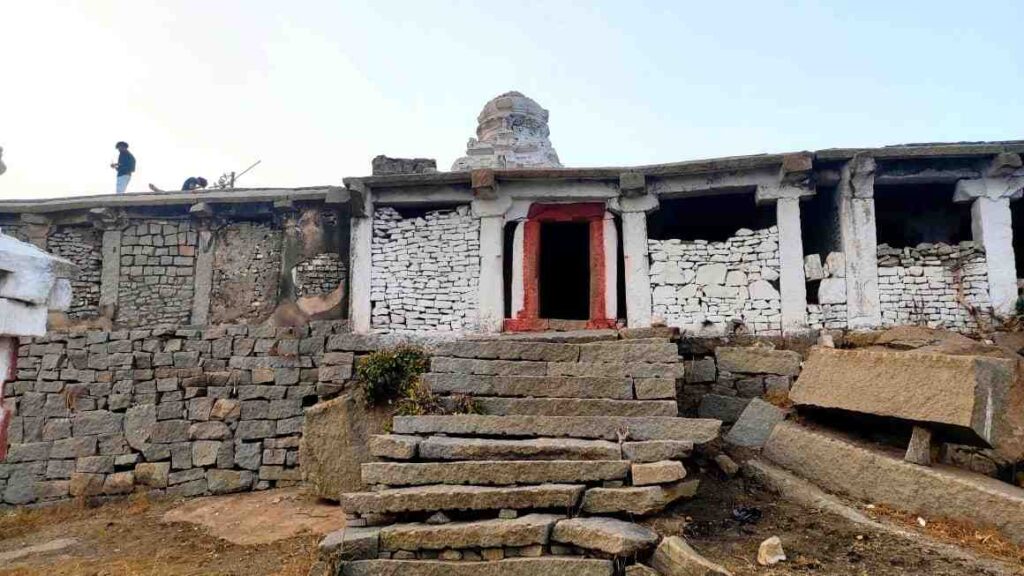
Trekking to the Top
Embarking on the journey to the summit of Matanga Hill is an adventure in itself. While there are various paths to reach Matanga Hill, two main routes are commonly taken by visitors seeking to reach the summit.
The first route, originating from Hampi Bazaar, offers a leisurely climb along a clearly defined path, meandering past ancient landmarks and captivating boulder-scattered terrain. On this route, travelers can soak in the rich history of Hampi while enjoying the natural beauty that surrounds them.
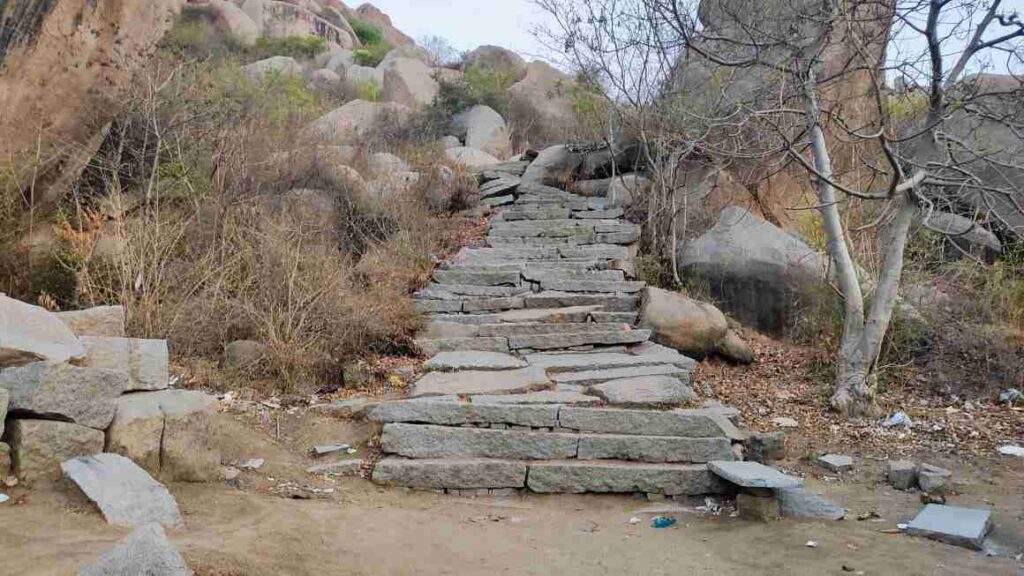
In contrast, the second route, commencing from the Achyutaraya Temple complex, presents a more direct approach to the summit. As you climb the hill using the second path, you’ll encounter a small pavilion. Here, you can admire fascinating landscapes, capture some photos, and even explore caves along the way. Although this path may feature steeper inclines and fewer amenities, it offers adventurers a thrilling journey through rugged terrain and glimpses of Hampi’s cultural heritage.
However, we highly recommend the second route for its unparalleled vistas of the Achyutaraya Temple complex, the bustling bazaar below, and the awe-inspiring pathway leading to the hill’s summit. This route promises an unforgettable experience, blending historical exploration with breathtaking natural scenery, making it a must-visit for all travelers to Hampi.

While the two main routes to Matanga Hill are commonly used, there is indeed a lesser-known third route on the south side. This path, less traveled by tourists, offers a more secluded and adventurous trek to the summit. It begins from the southern outskirts of Hampi and involves navigating through rugged terrain and dense vegetation. While this route may be more challenging to find and navigate, it rewards intrepid explorers with the opportunity to immerse themselves in the natural beauty of the surrounding landscape and enjoy a sense of solitude amidst the tranquility of Matanga Hill.
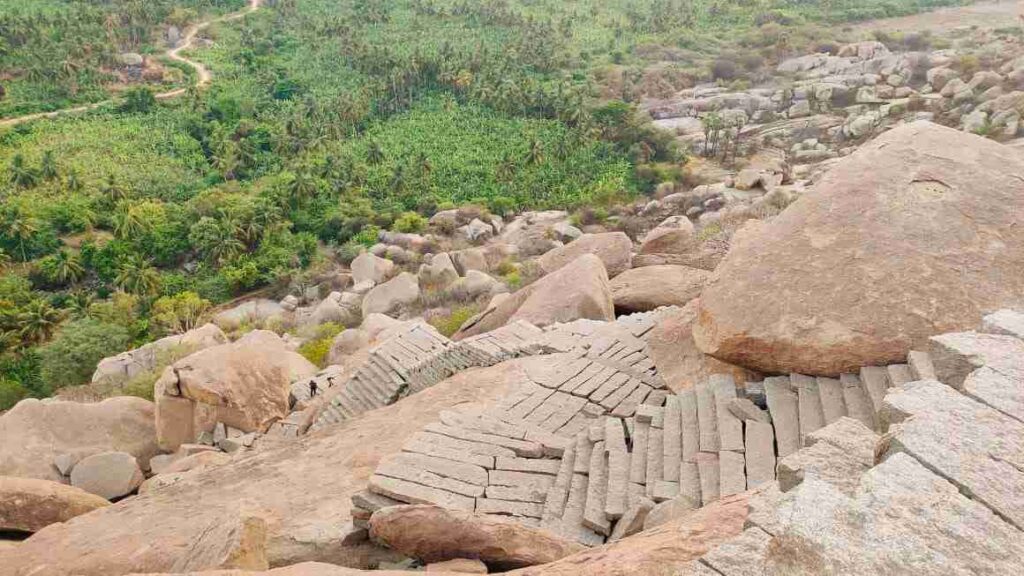
Sunset and Sunrise Viewpoints
Reaching the summit of Matanga Hill rewards you with breathtaking views that stretch as far as the eye can see. The hill offers two main viewpoints, one facing east and another west, making it ideal for witnessing both sunrise and sunset. As the sun rises or sets over the enchanting landscape, the play of colors and the interplay of light and shadow create a mesmerizing spectacle that is bound to leave a lasting impression.
Whether you’re capturing the first rays of dawn painting the sky in hues of gold and pink or watching the sun dip below the horizon, casting a warm glow over the ancient ruins of Hampi, the panoramic vistas from Matanga Hill offer a unique and unforgettable experience for visitors.
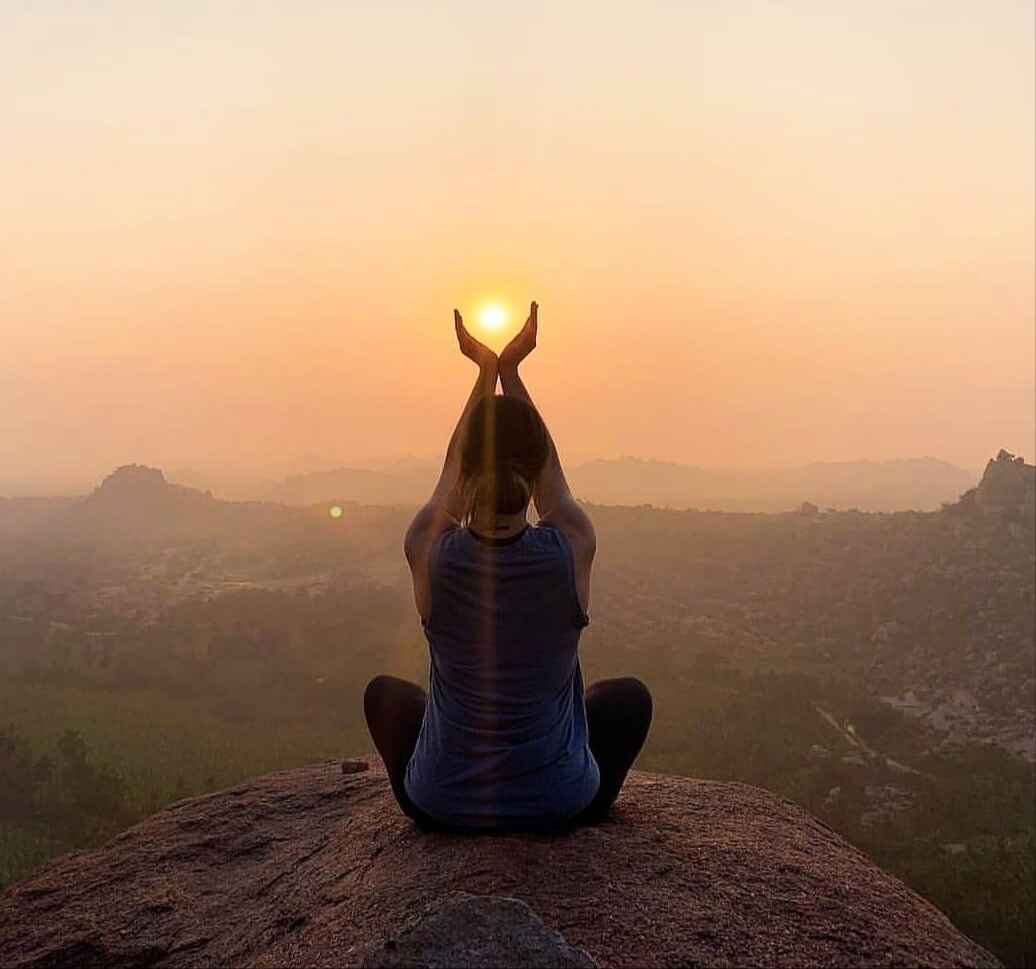
Panoramic Views: Hampi’s Architectural Marvels from Matanga Hill
When you reach the summit of Matanga Hill, you’ll be treated to a breathtaking view of Hampi’s architectural treasures. You can see the impressive remains of the Vijayanagara Empire, such as the grand Vittala Temple Route and the beautiful Lotus Mahal. Additionally, you’ll catch sight of the Achyutaraya Temple complex, Krishna Temple, Virupaksha Temple, Tungabhadra River, and Hampi Bazaar. These ancient structures, set against the rugged landscape, offer a stunning sight that photographers will love to capture.
This panoramic view is not just a feast for the eyes; it’s a window into Hampi’s glorious past. Imagine the bustling city during its reign, the vibrant markets, and the grand ceremonies that took place within the temple complexes. Standing atop Matanga Hill, you get a sense of the scale and grandeur of the Vijayanagara Empire.
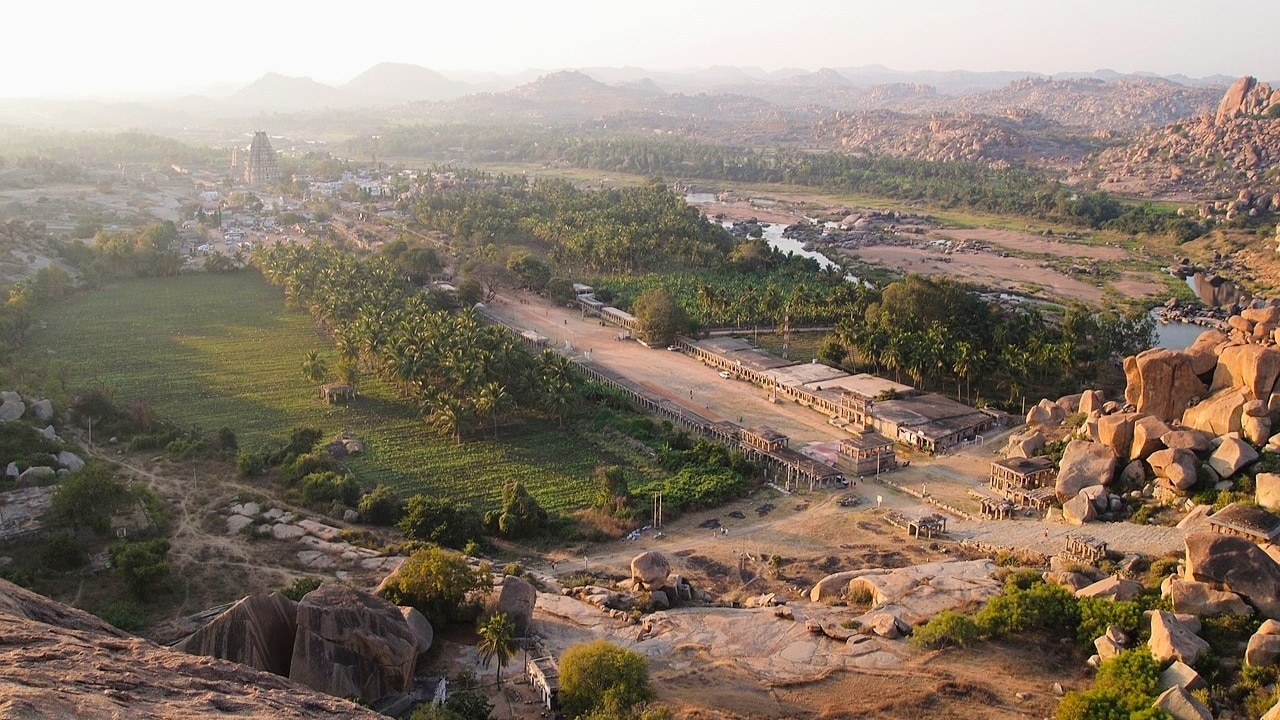
Exploring Matanga Hill: Beyond the View
While the panoramic view is the main draw, Matanga Hill offers a range of intriguing attractions to explore:
- Veerabhadra Temple: Nestled atop the hill, the Veerabhadra Temple is a small yet significant religious site dedicated to Lord Veerabhadra, a fierce manifestation of Lord Shiva. Visitors can soak in the peaceful ambiance of this ancient temple and marvel at its architectural details.
- Hidden Cave: According to local legend, Matanga Hill is home to a hidden cave where Sugriva, a prominent character from the Hindu epic Ramayana, once sought refuge. Although the exact location of the cave remains unknown, adventurous hikers may enjoy embarking on a quest to uncover this mystical hideaway.
- Flora and Fauna: Matanga Hill boasts a rich biodiversity, with diverse plant and animal species thriving in its rocky terrain. Nature enthusiasts can spot indigenous flora such as wildflowers, cacti, and shrubs, as well as various bird species and small mammals that call the hillside home.
- Rock Formations: The rugged landscape of Matanga Hill is adorned with unique rock formations, sculpted over millennia by natural forces. From weathered boulders to striking rock outcrops, these geological wonders add to the hill’s allure and provide ample opportunities for exploration and photography.
- Sunrise and Sunset: In addition to its daytime splendor, Matanga Hill offers mesmerizing views of sunrise and sunset. Watching the sun cast its golden hues over the ancient ruins of Hampi from the hill’s summit is a truly magical experience that shouldn’t be missed.
- Serenity and Tranquility: Matanga Hill has much more to offer than just stunning views. Its calm and peaceful environment offers a refreshing escape from the busy crowds down in the town. Here, you can enjoy the gentle breeze, listen to the rustling of leaves, and hear the faint sounds of temple bells in the distance. This serene atmosphere allows visitors to unwind and find inner peace amidst the tranquil surroundings, connecting with nature in a truly rejuvenating way.
Essential Tips for Trekking Matanga Hill in Hampi
Here are some essential tips to help you plan a memorable trek to Matanga Hill in Hampi, ensuring a smooth and enjoyable experience.
- Choose the Right Time: The ideal time to visit Matanga Hill is early morning or late afternoon to avoid the harsh midday sun. And avoid trekking during the scorching summer months as the heat can be intense.
- Physical Fitness: Matanga Hill trek involves a moderate level of physical exertion. Before embarking on the trek, ensure that you are in good health and have a reasonable level of fitness. Engage in regular exercise to build stamina and strength to make the trek enjoyable.
- Trekking Gear: Wear comfortable and sturdy footwear suitable for trekking. Carry a small backpack to hold essentials such as water, snacks, sunscreen, a hat, sunglasses, and a light rain jacket. Dress in breathable, moisture-wicking clothing to stay comfortable during the hike.
- Start Early: Begin your trek early in the morning to avoid the heat and crowds. This will also give you ample time to reach the summit, explore the viewpoints, and descend before it gets dark.
- Stay Hydrated and Energized: Carry an adequate amount of water to stay hydrated throughout the trek. It is also advisable to bring energy bars or fruits for a quick snack to keep your energy levels up.
- Trekking Route: Follow the well-marked trail that starts from the Hampi Bazaar. Take breaks along the way to rest and enjoy the scenery. Be cautious while climbing the stone steps, as they can be steep in certain sections.
- Pack Light: Travel light and only carry essential items such as a small backpack with water, snacks, a camera, and any personal belongings. Leave unnecessary items behind to avoid unnecessary weight and discomfort during the trek.
- Take Breaks: Pace yourself and take regular breaks along the trail to rest, hydrate, and admire the scenery. Listen to your body and know when to take a break if you’re feeling fatigued.
- Safety Precautions: Trekking in a group is recommended for safety purposes. Inform someone about your trekking plans and expected return time. Carry a fully charged mobile phone for emergencies. Be vigilant and stay on designated paths to avoid any potential risks.
- Respect the Environment: Hampi is a UNESCO World Heritage Site, and it is essential to maintain its sanctity. Do not litter and carry any trash back with you. Respect the surroundings and follow any guidelines or restrictions set by the authorities.
- Seek Local Guidance: If you are unfamiliar with the trekking route or would like assistance, consider hiring a local guide. They can provide valuable insights, ensure your safety, and enhance your overall trekking experience.
- Enjoy the Journey: While reaching the summit of Matanga Hill is the ultimate goal, remember to enjoy the journey and take in the sights and sounds along the way. Pause to appreciate the stunning views, unique rock formations, and diverse flora and fauna that make Matanga Hill such a special destination.
Gallery:-
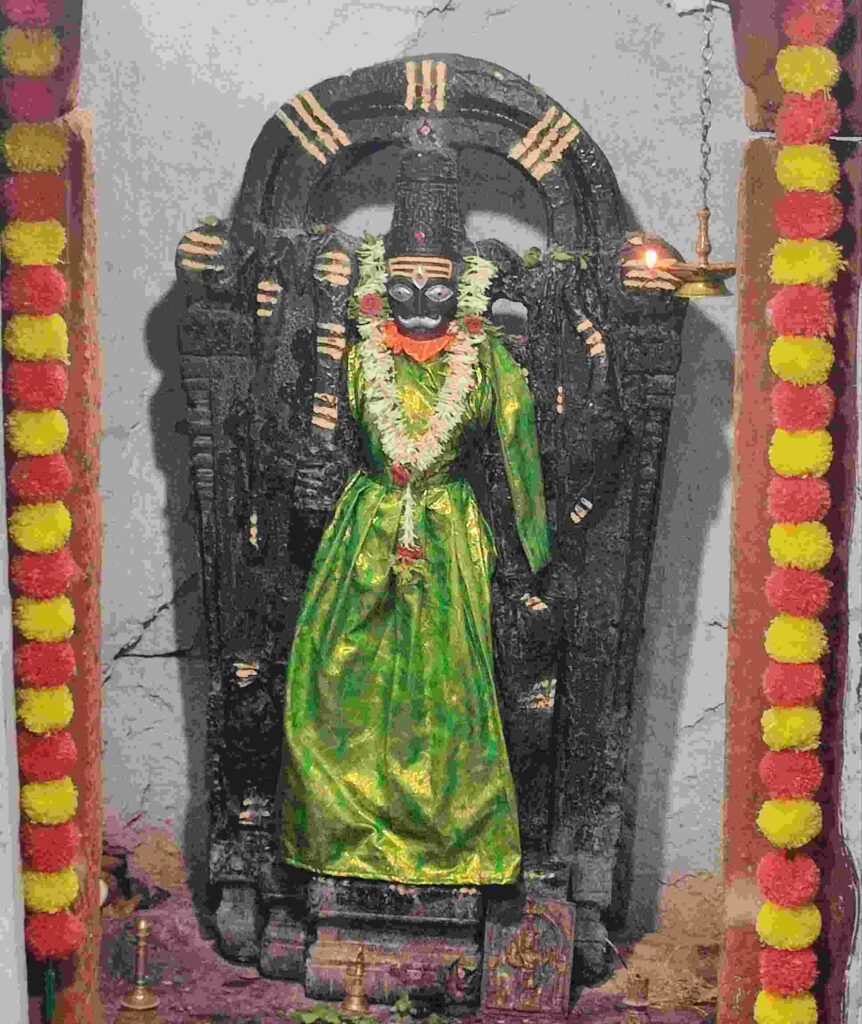
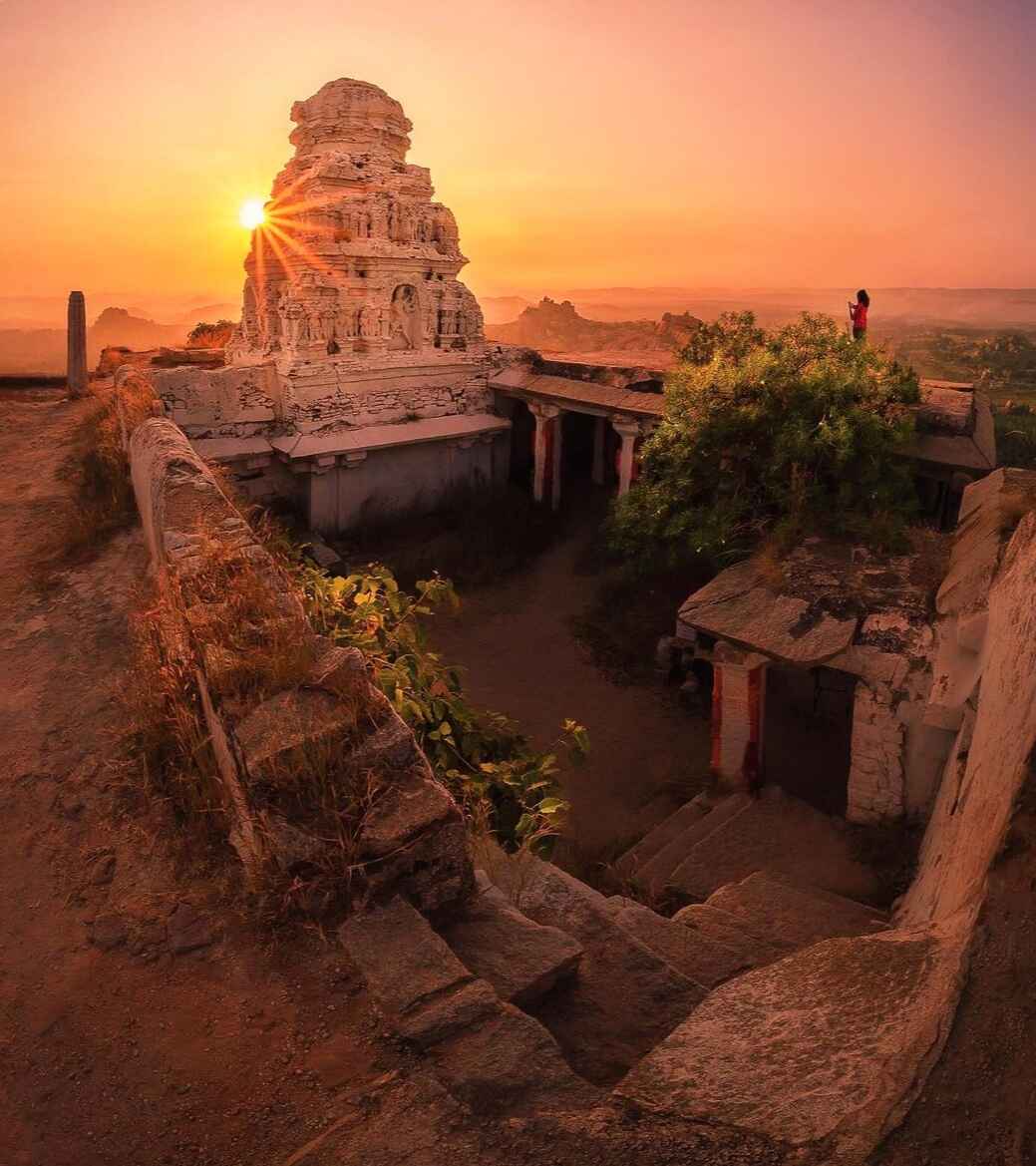
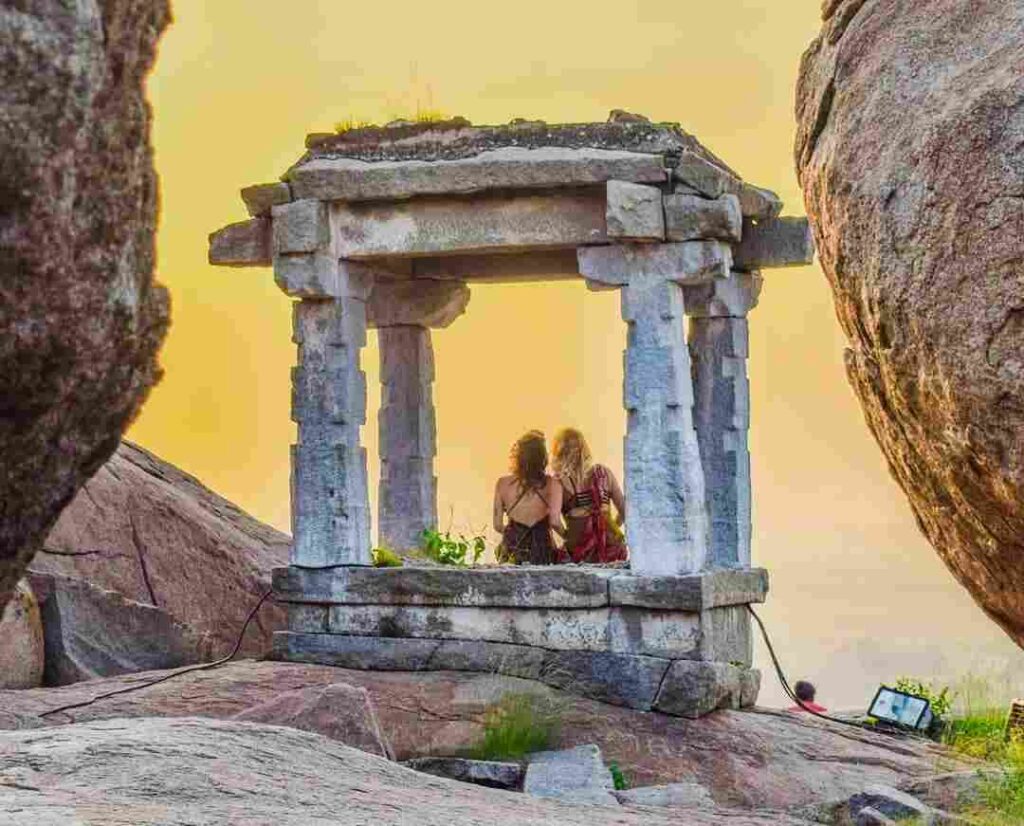
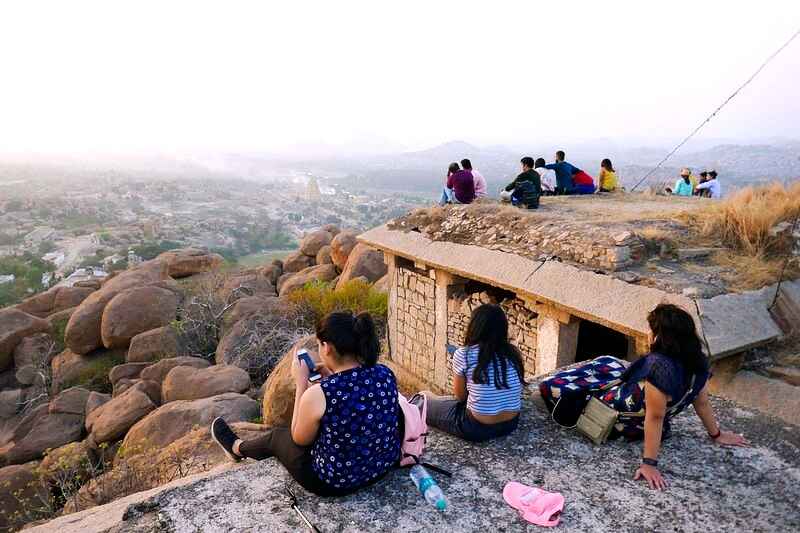

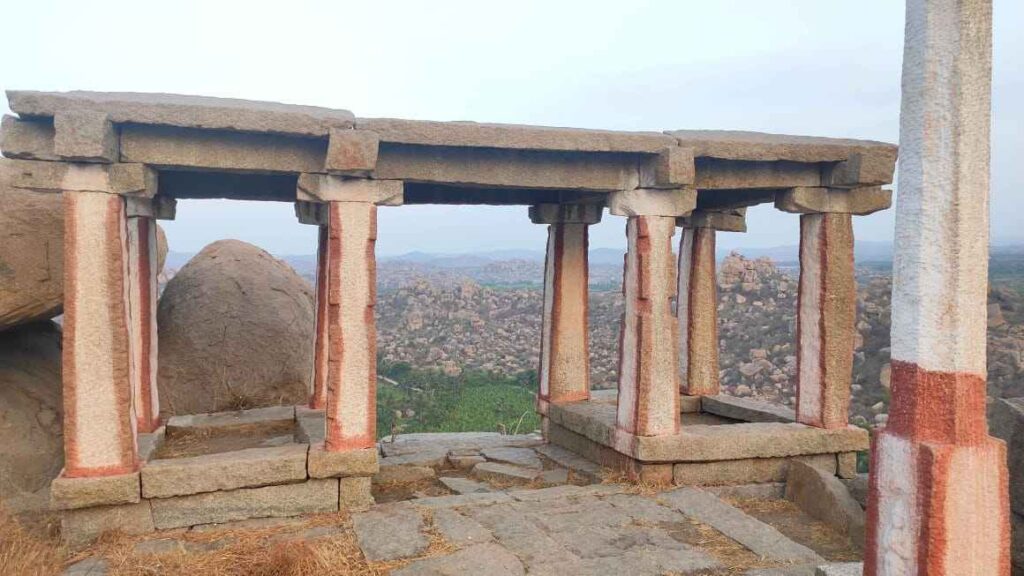


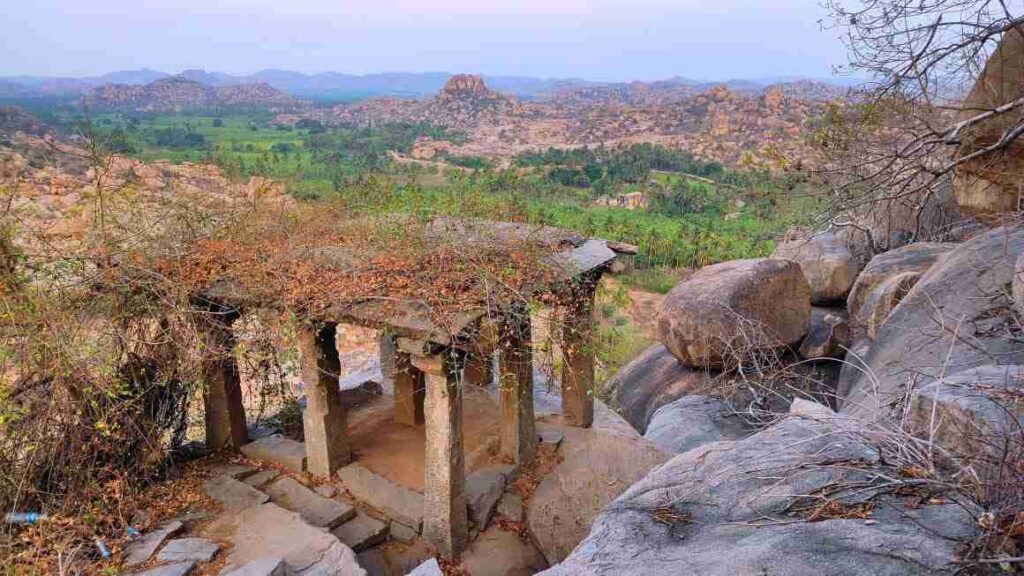
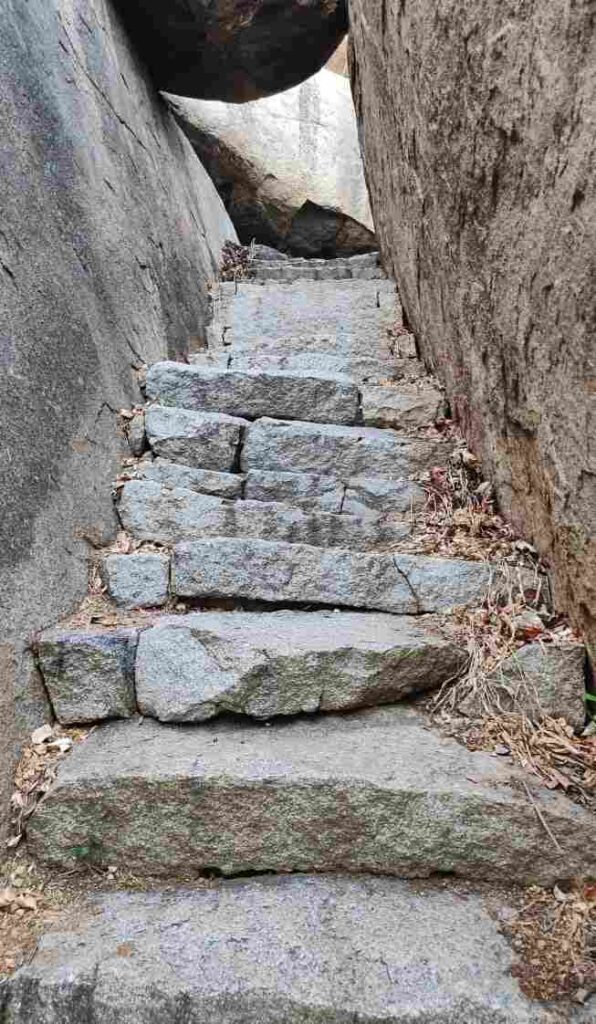
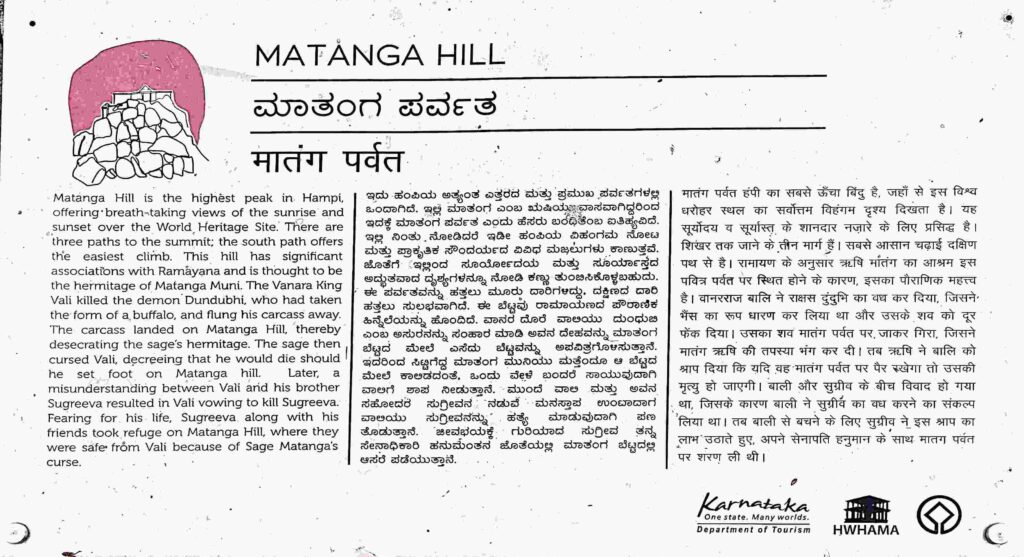
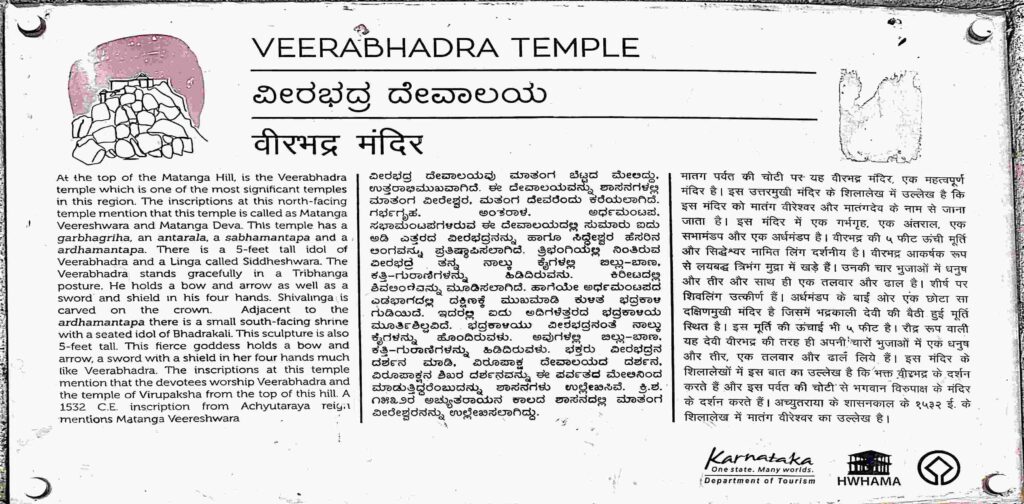
References:-
References from the Following Sources;